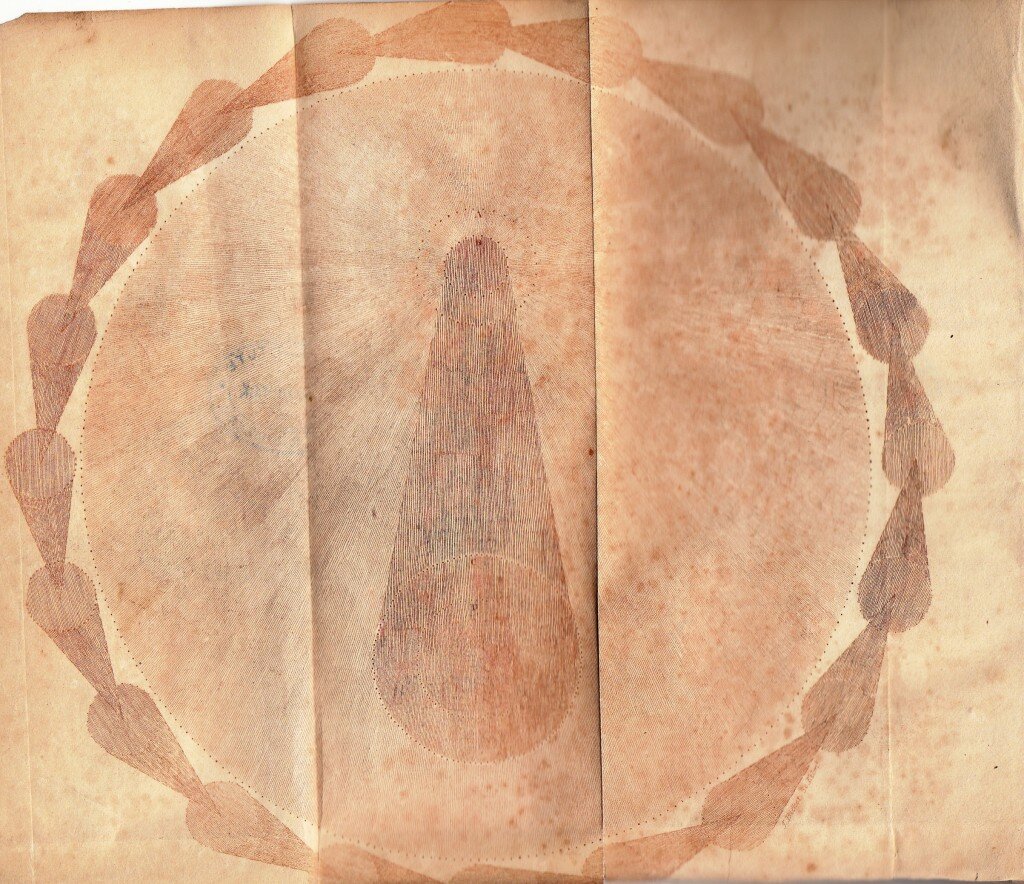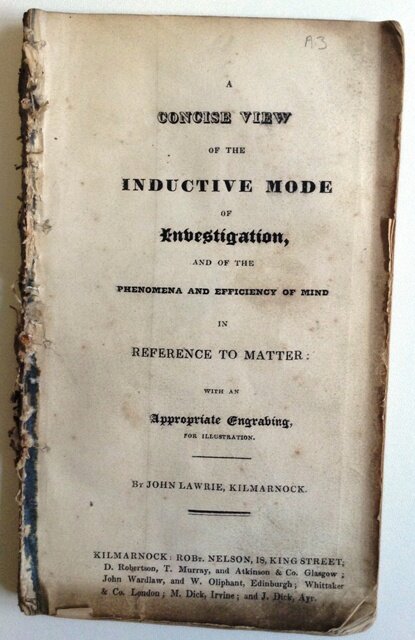We recently mentioned a puzzling pamphlet called A Concise View of the Inductive Mode of Investigation, and of the Phenomena and Efficiency of Mind in Reference to Matter: with an Appropriate Engraving, for Illustration by John Lawrie, Kilmarnock. It was published and sold in Kilmarnock by Robert Nelson, 18 King Street, and printed by J. Paterson in Kilmarnock, which would date it as c1830. (It was also sold by booksellers in Glasgow, Edinburgh, London, Irvine and Ayr.)
We know very little about this pamphlet or the author. The only record that we’re aware of is on the library catalogue of Yale University, where there is a copy bound with other volumes under the subject of phenomenology. It is extremely unusual in our collection of pamphlets and books printed in the town at that time, which usually contain poetry, sermons, or accounts of some local events.
We’d love to know more about the pamphlet and the author. We have a record of a John Lawrie in the 1833 Post Office Directory, listed as ‘Residenter, 47 High Street’. We are also aware of a John Lawrie born in Newmilns in 1810, who may have held a non-conformist congregation in Kilmarnock during the 1830s. He later moved to SW Australia and played a role in the emerging Baptist church of that region.
The most striking feature of the pamphlet is the engraving which folds out from the first page, which as the author states “represents the aspect and operation of anger” and is “an exact portrait of the mode which individual thought, in its physical results, always exhibits.”

The author gives an explanation of the engraving -
The circle A represents the head of a person; all the space within it is called the seat of the mind, or locality of the thinking principle; all that is within the circle B is denominated the image of the attractive object, displaying itself in the character of subjection, and in the attitude of universal expansion. The white bosom included within the figure D represents the human head or physiognomy. All the red surface included within the circle C, part of which encircles what denotes the head, and the rest mingles with its interior, we designate the attractive object.
And finally, our favourite part -
The exterior chain of attractive likeness which encircles the whole, is merely ornamental.
If anyone can tell us more about this pamphlet or the author we’d be delighted to hear about it. Just email us at .
